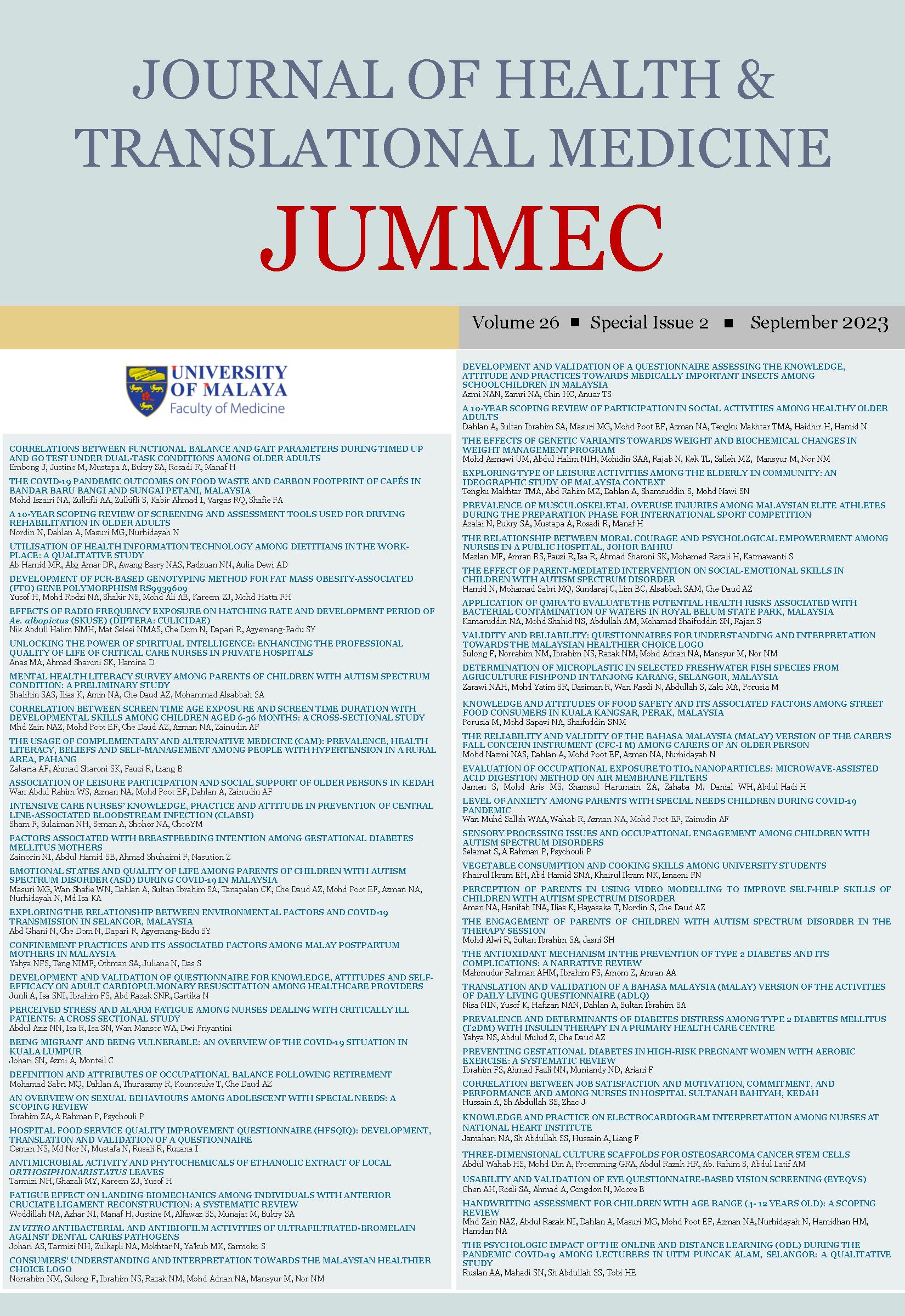PREVALENCE AND DETERMINANTS OF DIABETES DISTRESS AMONG TYPE 2 DIABETES MELLITUS (T2DM) WITH INSULIN THERAPY IN A PRIMARY HEALTH CARE CENTRE
Received 2023-07-08; Accepted 2023-09-24; Published 2023-09-24
DOI:
https://doi.org/10.22452/jummec.sp2023no2.47Keywords:
Diabetes distress, Insulin Therapy, Type 2 Diabetes Mellitus, Glycated HaemoglobinAbstract
Individuals with diabetes mellitus experience psychological issues associated with their disease and involve multiple states related to diabetes management. Insulin distress is a significant contributor to diabetes distress. The objective of this study is to identify the prevalence and determinants of diabetes distress among type 2 Diabetes Mellitus (T2DM) with insulin therapy in the setting of primary health care. Methods: This cross-sectional study was conducted from 1st August 2022 to 30th December 2022 at Sungai Buloh Health Clinic, Selangor, Malaysia. 300 T2DM with insulin therapy were recruited and screened for diabetes distress status. Their sociodemographic and relevant medical profiles were recorded, and the Diabetes Distress Scale (DDS) was used to measure diabetes distress. Results: Diabetes distress was prevalent among insulin respondents at a rate of 24.3%, with 13.2% of patients experiencing emotion-related distress, 7.7% experiencing regimen-related distress, 2.3% experiencing interpersonal-related distress, and 1.1% experiencing physician-related diabetes distress.The significant determinants for diabetes distress among diabetic cases were education with (OR = 0.248, 95% CI: 0.116-2.101), diabetes duration (OR = 0.415, 95% CI: 0.235- 0.735), exercises (OR = 17.91, 95% CI: 2.337-137.32), FBS (OR = 0.517, 95% CI: 0.283- 0.945), HbA1c (OR = 2.774, 95% CI: 1.249-6.159).Conclusion: The present study shows that diabetes distress prevalence is present among T2DM with insulin therapy. Then, suggested components of diabetes distress should be implemented as screening strategies among T2DM with insulin therapy to prevent the late detection of psychiatric disorders. The study highlights comprehensive planning, holistic collaboration, and integrated strategies to improve patient adherence and health outcomes.
Downloads
Downloads
Published
Issue
Section
License
All authors agree that the article, if editorially accepted for publication, shall be licensed under the Creative Commons Attribution License 4.0 to allow others to freely access, copy and use research provided the author is correctly attributed, unless otherwise stated. All articles are available online without charge or other barriers to access. However, anyone wishing to reproduce large quantities of an article (250+) should inform the publisher. Any opinion expressed in the articles are those of the authors and do not reflect that of the University of Malaya, 50603 Kuala Lumpur, Malaysia.


